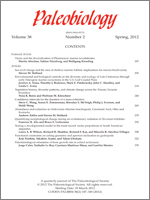We studied the morphological diversity of gastropod shell forms from the viewpoint of theoretical morphology, emphasizing the relationships of shell form to postural stability and the available space for soft body, which we assessed in terms of the moment of force and soft-tissue ratio calculations, respectively. The results of computer simulations suggest a functional trade-off between postural stability and available space for soft body: a compact shell possessing a low spire and small umbilicus exhibits high postural stability, whereas a less overlapped shell form with a high spire and large umbilicus makes available space for soft body. A functional morphospace analysis using theoretical models reveals that outward and downward inclination of the aperture moderates the functional trade-off between these parameter values and permits compatibility between stable posture and efficient shell construction. The hypothetical optimum that realizes this compatibility is consistent with the observed range of forms estimated from 359 extant gastropod species. The biometric results also suggest that land snails are more highly constrained than marine species in achieving a balance between postural stability and available space for soft body.
How to translate text using browser tools
1 March 2012
Functional constraints on coiling geometry and aperture inclination in gastropods
Koji Noshita,
Takahiro Asami,
Takao Ubukata
ACCESS THE FULL ARTICLE

Paleobiology
Vol. 38 • No. 2
Spring 2012
Vol. 38 • No. 2
Spring 2012




